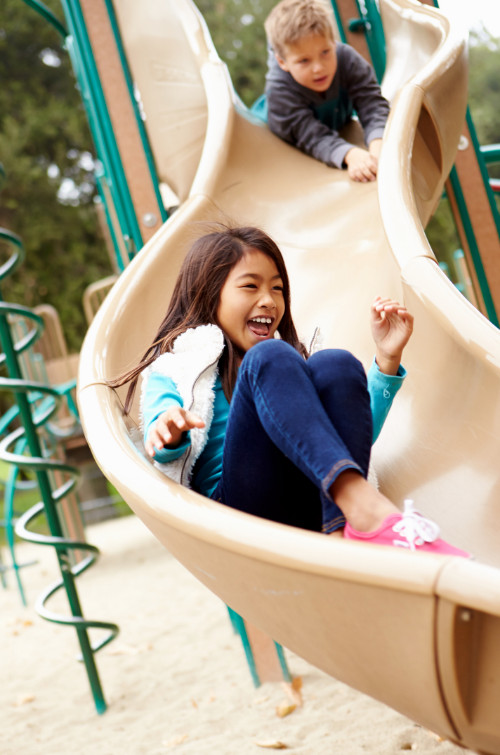In order to help children with their behavior, we first must help them calm down. This brings the ‘thinking brain’ back online.
Secondly, we need to give students ‘tools.’ These tools are skills they can practice prior to stressful moments to help prevent a meltdown, or bad behavior from occurring.
Are you looking for tools to help children regulate their behavior? Here are ten to get you started:
 1. Prioritize your own self-regulation
1. Prioritize your own self-regulation
Adults who are regulated can think clearly, manage stress better, and help children regulate. Children mirror our emotions. They sense our stress. Take a deep breath knowing that when you are calm, your students will also sense and feel calm.
2. Age Appropriate Vocabulary
Talking with children increases their vocabulary, comprehension, and self-awareness. Talking with children about their emotions increases their ability to understand their feelings, express their needs, empathize, and learn new behavior options. You can help children increase their vocabulary through guided conversations, or through modeling by expressing your feelings and emotions in an appropriate way. Be sure to give names to different emotions. Share how you know when you are tired, or excited, and what healthy things you do when you feel these emotions to help you regulate.
3. Read and tell Stories
Reading and telling stories opens new worlds and new perspectives for children. Children can make connections and identify with the characters and the problems they face. Stories invite conversations on a variety of topics related to feelings, behavior, solving problems, and more.
Ask the children what the character might do, did do, and what the result of different choices might be. Ask open-ended questions. My favorite question to ask is “I wonder . . . . . . ?”. The beauty of this question is that it invites curiosity. There are no prescribed answers so the children are not intimidated by the pressure of a ‘right’ or ‘wrong’ answer. You might ask if they have ever felt the way one of the characters did. This will encourage children to begin thinking about emotions and behavior in new ways. In these conversations, you can guide the conversations to healthy ways of regulating our emotions and behaviors.
 Have the children change the problem in the story. What happens? Children can also change the ending to the story. The opportunities are endless. If you are a parent and you find yourself reading your child’s favorite story night after night, these are fun ways to extend and add interest to the story.
Have the children change the problem in the story. What happens? Children can also change the ending to the story. The opportunities are endless. If you are a parent and you find yourself reading your child’s favorite story night after night, these are fun ways to extend and add interest to the story.
4. Problem-solving
Children need many opportunities in solving problems. Each problem-solving experience is a learning opportunity. When children experience problems they have the opportunity to make choices. They also have the opportunity to see how different choices have different outcomes. This is one reason play, recess, and social times are so important.
Children need these opportunities to take on different roles, problems, choices, and in the end, experience different outcomes. Think of all the opportunities children have in their day to practice. How can you be a mentor in helping them learn to solve problems?
5. Exercise
Children need exercise. And lots of it! Exercise reduces stress, increases mood-improving hormones, and supports cognitive processes. Exercise helps build muscle and helps us feel strong. When we feel physically strong, we often feel emotionally strong. Exercise offers opportunities to build relationships, solve problems, and just have fun! Allow as much time as possible for free play and large muscle movement throughout the day.
6. Quiet Time
We all need quiet time, including children. Many of us do not get enough of it these days. Our fast-paced adult lives are the opposite of what children need in order to grow and develop. As an adult, it’s important to offer opportunities for the child to quiet the body and mind. Moving from busy activities to quiet time gives children practice in regulating their nervous systems and improving their behavior.
7. Practice Regulating
We are not born with the ability to regulate. We need lots of practice and appropriate modeling from trusted caregivers. This means practicing ways to mobilize energy when needed and to slow the body for the same reason. For example, when children are returning from PE class or recess they are often excited, sweaty, and energized. Upon reentering the classroom, students need time to transition to quieter, calmer work. Asking a child to quickly jump from one activity to the next will only lead to dysregulation. We have to show the children how to slow down and transition with a reasonable amount of time and patience.
8. Responding To Needs
As a teacher, you have children with many different personalities and needs in your care. As adults, we need to acknowledge each child’s needs. This could be giving an immediate response, a smile, a nod, or a suggestion on how the child can meet the need.
Or, this could be letting the child know you will attend to their need and giving a timeline of when that will happen. “I’m not able to help you with that right now. I need to finish this work and I will meet you at your desk in 5 minutes.”
 9. Play
9. Play
Play is a priority for all children. Play is how children learn. Play relieves stress, helps children work through problems, promotes cooperation and so much more. When children play they often take on different roles, change the rules to games, and find ways to get along. These activities let children experience behaving in a different way, see other solutions, and look at a situation from a different perspective. Just what we want them to do when solving problems. Play is a fun way to practice solving problems.
We all need to play throughout our lives.
10. Visualization
Visualizing, which is also called remembering, is a great tool for children to have. Giving children time and guidance in remembering good experiences in their lives is important in helping them build this mental skill.
Children who have experienced trauma are often locked into negative memories. Opening the space for them to experience memories of safe and pleasant experiences, then practicing recalling these memories, helps them begin to build a mental photo album of happy times. As they practice, they can come back to these safe spaces anytime they feel overwhelmed.
As the teacher or parent, you can facilitate this practice through the voluntary sharing of experiences during group time, or family time. This helps build not only community and empathy, but also helps children hear warm stories that will help them think of their own positive experiences. Children can also journal, draw, or have mindful moments to reinforce memory and memory retrieval. And remember to help children recall times they behaved well!
If you would like more information or a presentation for your group, please contact me at [email protected]
For additional reading consider:
Duke Center for Child and Family Policy. Co-regulation from Birth Through Young Adulthood: A Practice Brief. https://fpg.unc.edu/sites/fpg.unc.edu/files/resources/reports-and-policy-briefs/Co-RegulationFromBirthThroughYoungAdulthood.pdf
Gil, E. (2010). Working with children to heal interpersonal trauma: The power of play. Guilford Press.
Mackenzie, S. (2018). The Read aloud family: Making meaningful and lasting connections with your kids. Zondervan.
Montroy, J. et al. (McClelland). (2016). The Development of Self-Regulation across Early Childhood. Developmental Psychology, 52(11), 1744-1762).
https://europepmc.org/backend/ptpmcrender.fcgi?accid=PMC5123795&blobtype=pdf
Pontifex et al. (2011). Cardiorespiratory fitness and the flexible modulation of cognitive control in preadolescent children. Journal of Cognitive Neuroscience, 23(6), 1332-1345.
Rosenbalm, K.D., & Murray, D.W. (2017). Caregiver co-regulation across development: A practice brief. [OPRE Brief #2017-80]. Washington DC: Office of Planning, Research, and Evaluation, Administration for Children and Families, US. Department of Health and Human Services.
Tsatsoulis, A. and Fountoulakis, S. (2006). The protective role of exercise on stress system dysregulation and comorbidities. Annals of the New York Academy of Sciences, 1083, 196-213.

